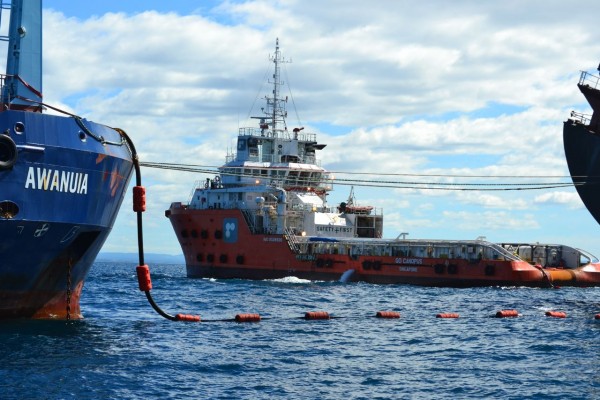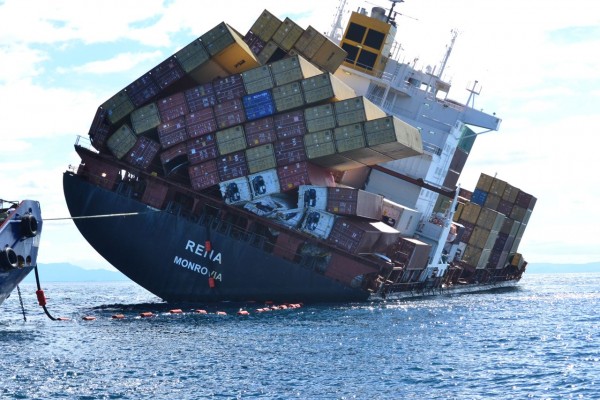Rena Oil Pumping Ends
Maritime New Zealand confirmed this afternoon that almost all of the heavy fuel oil aboard the Rena has now been recovered.
The pumping of fuel from the vessel has now ceased and the Awanuia is being released this afternoon. Salvors will now focus on the next phase of the operation, the container removal. The crane ship ST60 will begin moving into position alongside Rena tomorrow, in preparation to start removing containers from the ship.
Salvors had pumped 319 tonnes from the number 5 starboard tank. They estimated 10% of this could be water, leaving potentially around 60 tonnes of fuel oil in the tank. This will be extracted over the next few days, but this will be an intermittent process, as salvors must wait for the residual oil to float to the top of the water in the tank, before extracting it.
Transport Minister Steven Joyce says the operation is now in a transition phase - shifting from oil recovery to container removal.
“I’ve been advised that the crane barge ST60 will be in place tomorrow and will take the bulk of the day identifying the best position to anchor before starting the complicated container removal process.”

Go Canopus and Awanuia receive oil from the Rena | LOC
“The fragile state of the ship and precarious positioning of the 1,280 containers aboard means this will be a long process, with no more than about 6 containers removed each day dependant on sea conditions.
“While there is still a long, hard road ahead, the first priority has always been the safe removal of oil from the Rena and it is a huge relief to everyone involved that that has largely now occurred.

Rena | LOC
“When the Rena hit the reef in the early hours of 5 October, damage to the duct keel and the starboard number 3 tank resulted in the release of some 350 Tonnes of fuel oil into the sea. While that was clearly a terrible thing to occur, the meticulous work of the salvors has meant no oil from the other tanks has been released.
“The initial grounding of the ship caused major damage to the ship’s internal pumping system. It was a long, difficult process to construct various manual pumping systems to enable the safe pumping of fuel from the vessel.
“While all of us would have liked to see pumping commence as soon as the Rena hit the reef, the reality is that the nature of the collision and the damage to the ship meant that it was always going to take some time before pumping could commence.
Mr Joyce thanked the salvors, the many volunteers who have been involved with the cleanup effort and the people of the Bay of Plenty for their support to date.
“This is not a situation anyone would wish to occur but I am very pleased with the salvage and clean up efforts to date.
“There is, however, a strong possibility that some oil remains trapped in the vessel (i.e. in the duct keel) and that it could be released if the Rena breaks up, or when the wreck starts to be removed in phase three of the operation. However, the vast bulk of the 1,350 Tonnes held in tanks on the ship has now been removed.











0 Comments
You can be the first one to leave a comment.